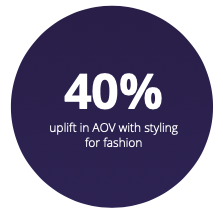Top Email Personalization Strategies in 20244 min read
Table of Contents
This holiday season, it is even more important to put mail at the centre of your marketing plans. Despite all the fancy new ways by which you can reach a shopper, a whopping 320 billion emails are estimated to be sent each day this year. That’s more than 40 times the population of the world! Email marketing has transitioned from being a basic communication channel to one that can actively connect, coax, and convert shoppers. Email generates $42 for every $1 spent.
Every email that a retailer sends to a shopper needs to fulfill one of three goals:
- Lure shoppers to the site and explore the products
- Bring back shoppers who have abandoned their carts and make them complete the purchase
- Cross-sell products to shoppers based on their purchase patterns
But with the sheer number of emails being sent out, retailers need to make sure their emails stand out in a flooded inbox. This is where email personalization comes into the picture. These days, using tags for names so that shoppers get an email addressing their own names passes off for personalization but this is not the kind of personalization I am talking about.
Email Personalization
Personalized emails from eCommerce retailers need to have dynamic content that is relevant to them. They need to have products relevant to the shopper to make them want to click it and come back to the site. For this, retailers need to truly understand their customers. They need to know what their affinities are, and what context they are shopping with.
This can be done by using AI-powered shopper profiles.
When the email personalization platform understands real-time data, and shopper preferences, and shopper intent, it can recommend the right products at the right time to the right shopper.
In a recent study, we noticed that
AI-powered emails see over a 58% increase in the click-to-open ratio for emails as compared to an industry average of 18.39%, that’s a massive difference.
Here is how retailers can use AI-powered email personalization
1. Rescue abandoned shopping carts
The easiest way to lead shoppers back to the website is by sending them an app notification or an email reminding them that they’ve left their cart without completing the purchase.
62% of retailers send cart abandonment emails
Cart abandonment emails are simple and the ROI is incredibly high.
Nearly half of all abandoned cart emails are opened and over a third of clicks lead to purchases back on site.
Typically, a cart recovery email has
- Picture of the products in the cart
- Ratings/Reviews of the products by other shoppers
- Return/exchange policy information
- Complete price of the product including shipping charges
- A clear call-to-action button that links to the cart
But if a retailer really wants to stand out, they can include the following in their cart recovery emails.
Visually similar products
Once a shopper opens the email, they need to be enticed to go back and complete the purchase. While the shopper may have liked that particular item which is in the cart, they may have liked the style. A “You may also like” section can go a long way in this case. This gives the shopper different choices which are visually similar to the product in the cart, allowing them to pick another piece similar to what they had browsed.
Complementary products to style the outfit
There are times when a shopper won’t know what to pair with an outfit and will end up abandoning the cart because of this. Personalizing styling options based on the shopper’s style profile can prove to be the catalyst that converts the shopper. The same top can be styled in several different ways as shown below. An email with different styling options can not only help recover the cart but also increase the size of the cart.
2. Cross-sell in order confirmation emails
The shopper journey doesn’t stop with a buy. Retailers can uplift their revenue by showing the shoppers personalized outfit recommendations for the products they just bought, or products frequently bundled with them.

3. Re-engage in order cancellation emails
Reconnect with shoppers who have canceled an order with products similar to what they have liked in the past. Complementary products can also be used to complete the look and give them styling ideas.
4. Personalize promotional emails
Boost brand loyalty and engagement by sending shoppers curated collections based on their individual tastes and preferences. These collections can be curated based on the shopper’s affinities, and intent.
Conclusion
Email personalization is not a luxury but a necessity today. With 72% of consumers only responding to personalized marketing messages, retailers have to incorporate a good email personalization . With the wave of email personalization cresting, customers aren’t pleasantly surprised to receive personalized product recommendations anymore, they expect it.






